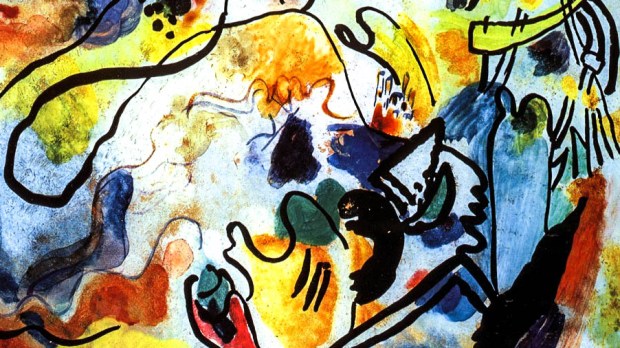Lenten Campaign 2025
This content is free of charge, as are all our articles.
Support us with a donation that is tax-deductible and enable us to continue to reach millions of readers.
The Last Judgment has fascinated Western artists since the onset of Christianity. In early Christian art, pictures of the Last Judgment often include the return of Christ as a judge, weighing the deeds of souls and sorting them between saved and damned.
In the Romanesque period, the character of Christ the Judge takes on more authoritarian tones and is usually depicted with the four mythical beasts of the apocalypse—the lion, the ox, the eagle and the winged man—whose multiple eyes and wings symbolize the ability of God to see and know everything that exists.
In the Gothic period Christ is usually presented as a benevolent redeemer surrounded by the tools of his Passion—cross, lance, nails and thorny crown. During the 16th century Michelangelo’s Last Judgment fresco on the Sistine Chapel steers the attention once again towards the stern aspect of Christ as he judges the souls of the dead. Michelangelo’s painting is probably the Last Judgment picture that most of us recall when thinking of this scene, but he was not the only one to offer a visually striking representation of John’s words. Here is a list of five artists that masterfully turned the Last Judgment into powerful imagery.
1. Hieronymus Bosch, The Last Judgment (1482)
Bosch’s Last Judgment triptych is currently part of the permanent collection of the Academy of Fine Arts in Vienna. Bosch is considered one of the most important figures in Early Netherlandish art and is well-known for the magical creatures often featured in his dream-like paintings.
On the left panel we find a depiction of the fall of man and the expulsion from the Garden of Eden. The bright red used to depict human figures offers a sharp contrast against the peaceful green surroundings—a symbol of the dangers of human passions. The Last Judgment takes place in the center panel, where Jesus and the apostles look down on apocalyptic scenes taking place on earth as Christ makes his verdict on who can be saved. Here again human figures are clothed in vermillion red against a dark-colored earth.
Finally, on the right, Bosch features a depiction of Hell where the damned are accompanied by a series of brightly colored demonic creatures—a signature feature of the northern Renaissance master style.
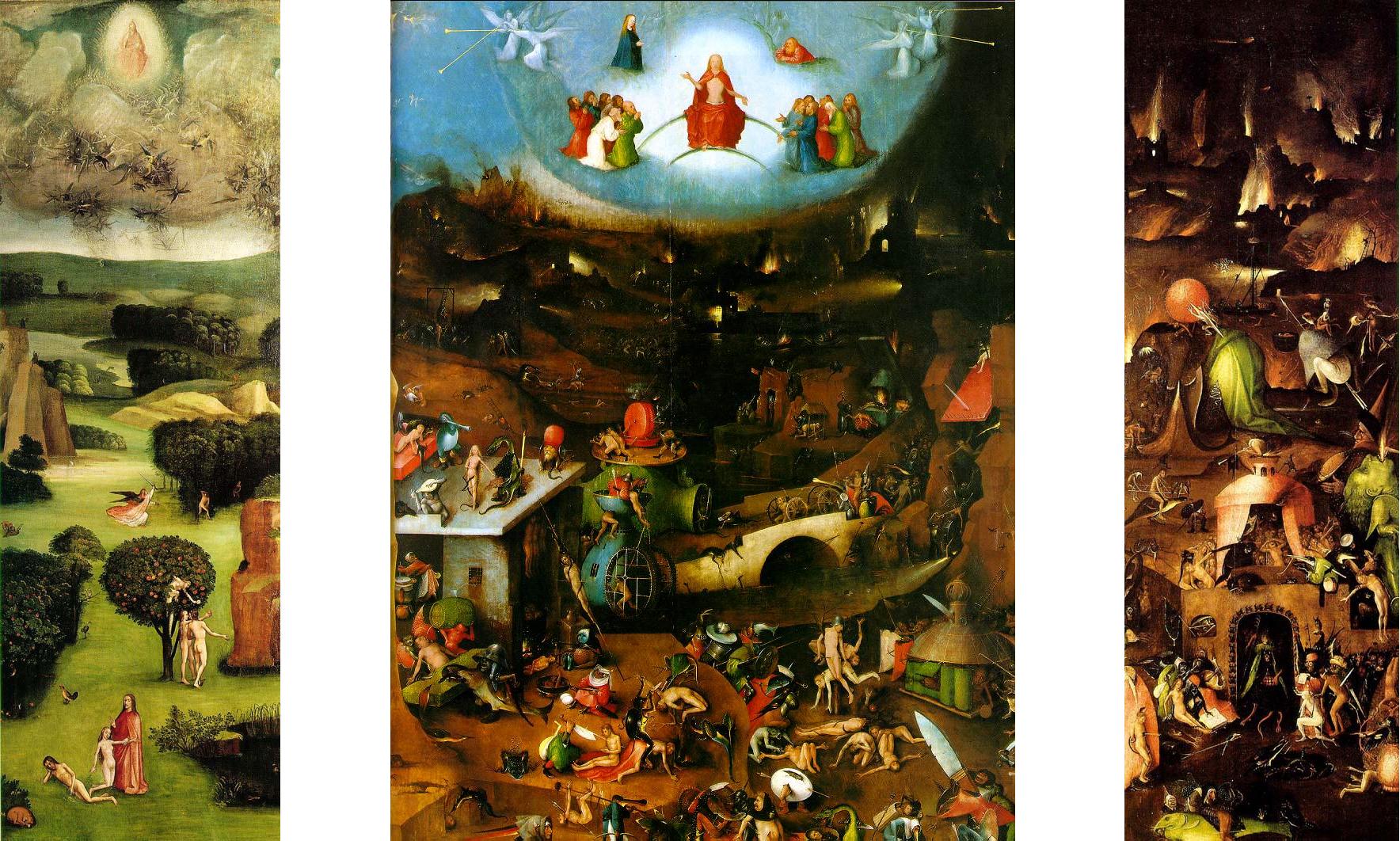
2. Luca Signorelli, The Last Judgment (1499–1502)
Luca Signorelli was an Italian Renaissance painter active in his native Tuscany as well as Rome and Umbria during the 16th century. His depiction of the Last Judgment in the Saint Brizio Chapel of Orvieto Cathedral is less known than Michelangelo’s Sistine Chapel fresco, yet Signorelli’s depiction of fearful nude bodies awaiting judgment is what inspired the famous image of fearful souls in Michelangelo’s work.
Signorelli’s Last Judgment is divided into two parts by the altar’s window: on the left we find the damned consigned to Hell while the blessed welcomed to Paradise appear on the right. The use of green and purple to depict the devils make them stand out among the crowd of souls and accentuate the overall sense of fear and horror of the Hell scene.
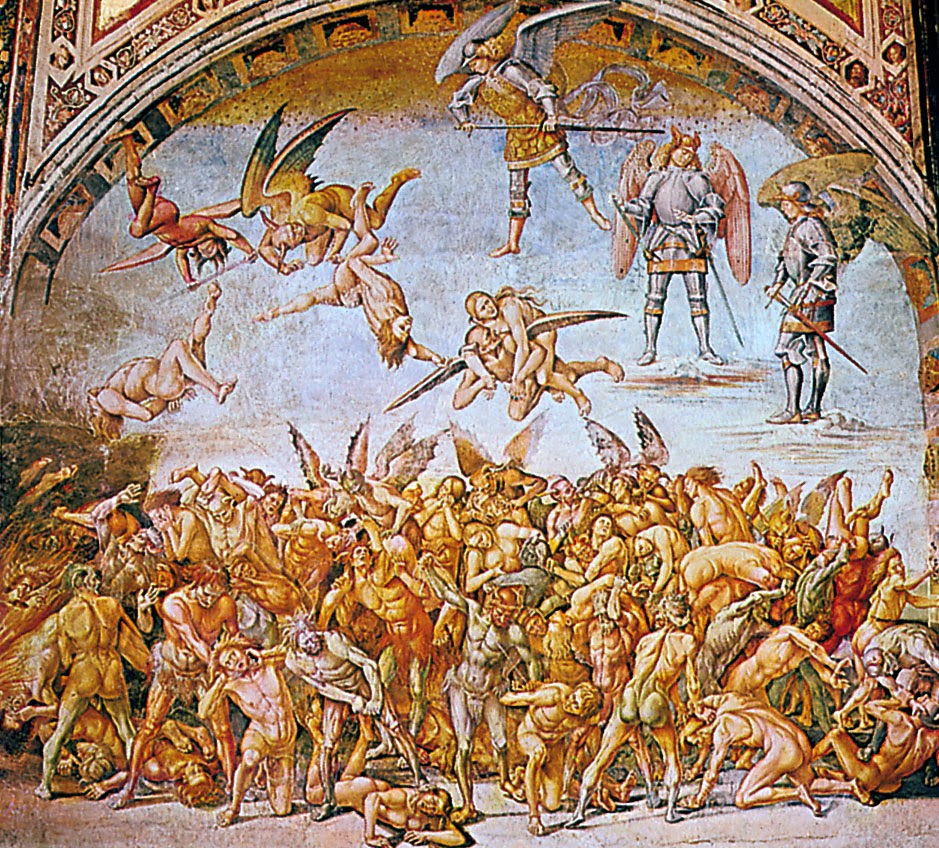
3. Michelangelo, The Last Judgment (1541)
Started in 1536 and completed in 1541, Michelangelo’s Last Judgment is probably one of the most well-known works of Western Art. Originally commissioned by Pope Clement VII to decorate the altar wall of the Sistine Chapel, it was completed underPope Paul III. As in Signorelli’s work, the damned are nude and take on complex muscular poses that reveal their suffering. They are depicted on the right of the fresco in descending motion, while the saved stand on the left as they ascend toward Heaven. At the center stands a beardless Christ whose depiction was partly inspired by earlier images of pagan gods like Hercules and Apollo. He is shown in a mighty pose as he pronounces the verdict of the Last Judgment looking down toward the damned. To his left, a melancholic or resigned Mary directs her gaze toward the saved. On the right, at some distance, stands St. Peter, holding the keys of Heaven, perhaps passing them on to Christ as he will no longer need to use them. The use of bright colors and dramatic imagery makes this gigantic fresco—measuring 39 feet by 45 feet—one of the most powerful works of art of all times.
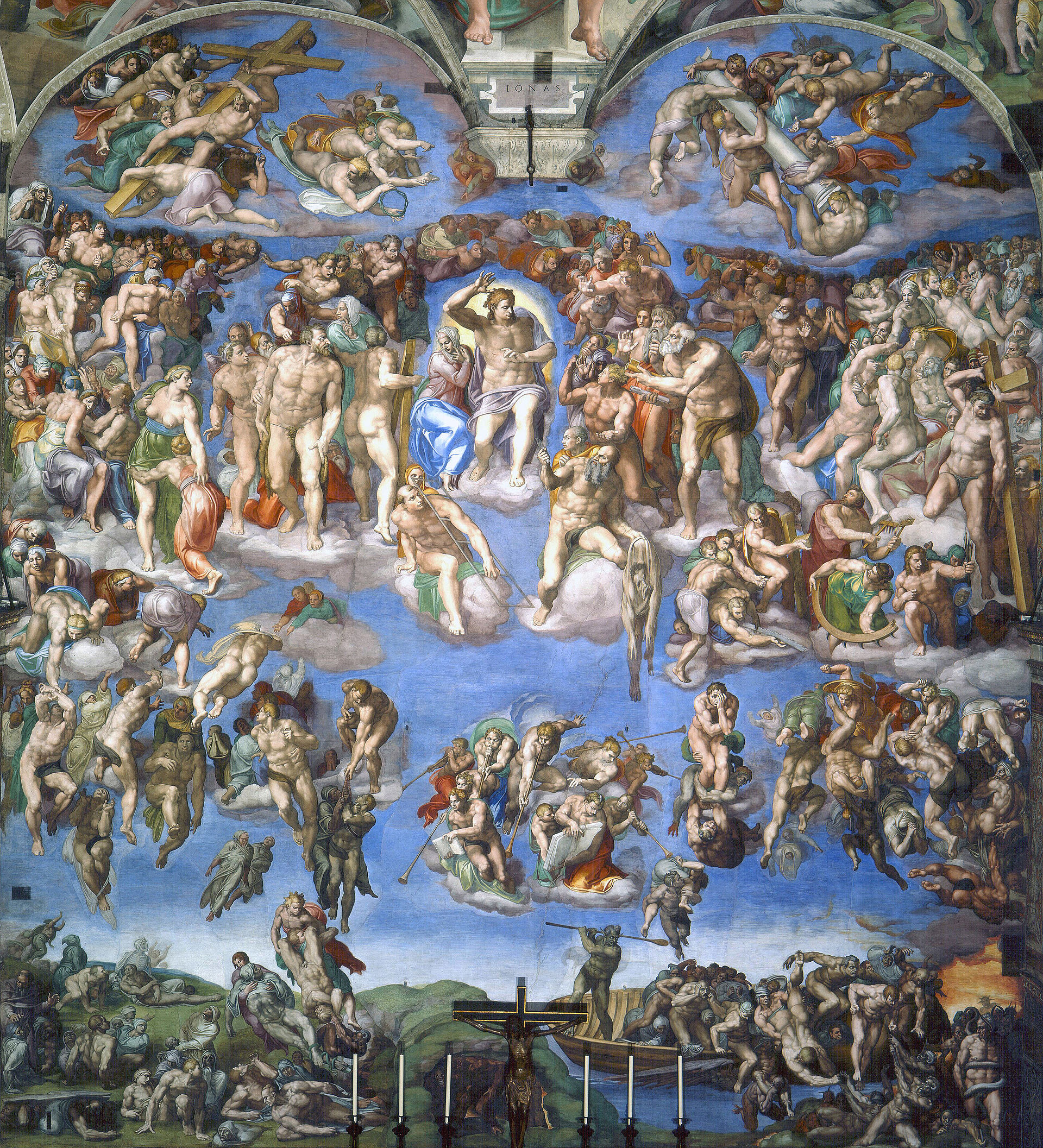
4. John Martin, The Last Judgment (1853)
English romantic painter John Martin is perhaps best known for moving depictions of otherworldly landscapes. But much of his work focused on biblical themes, including the Last Judgment. His own take of the Last Judgment is part of a triptych which includes the Plains of Heaven and The Great Day of His Wrath. God is depicted sitting on a throne in Heaven surrounded by the four angels and by the twenty elders. Below them stands a creek dividing two groups: on the left we find the saved awaiting to ascend to Heaven while the damned appear on the right side as they tumble down toward a bottomless pit. Martin featured real life people in his painting, with some notable wealthy women, lawyers and churchmen from his time featured among the damned for having pursued only material wealth during life. Notable figures among the saved are George Washington, Nicolaus Copernicus and William Shakespeare.
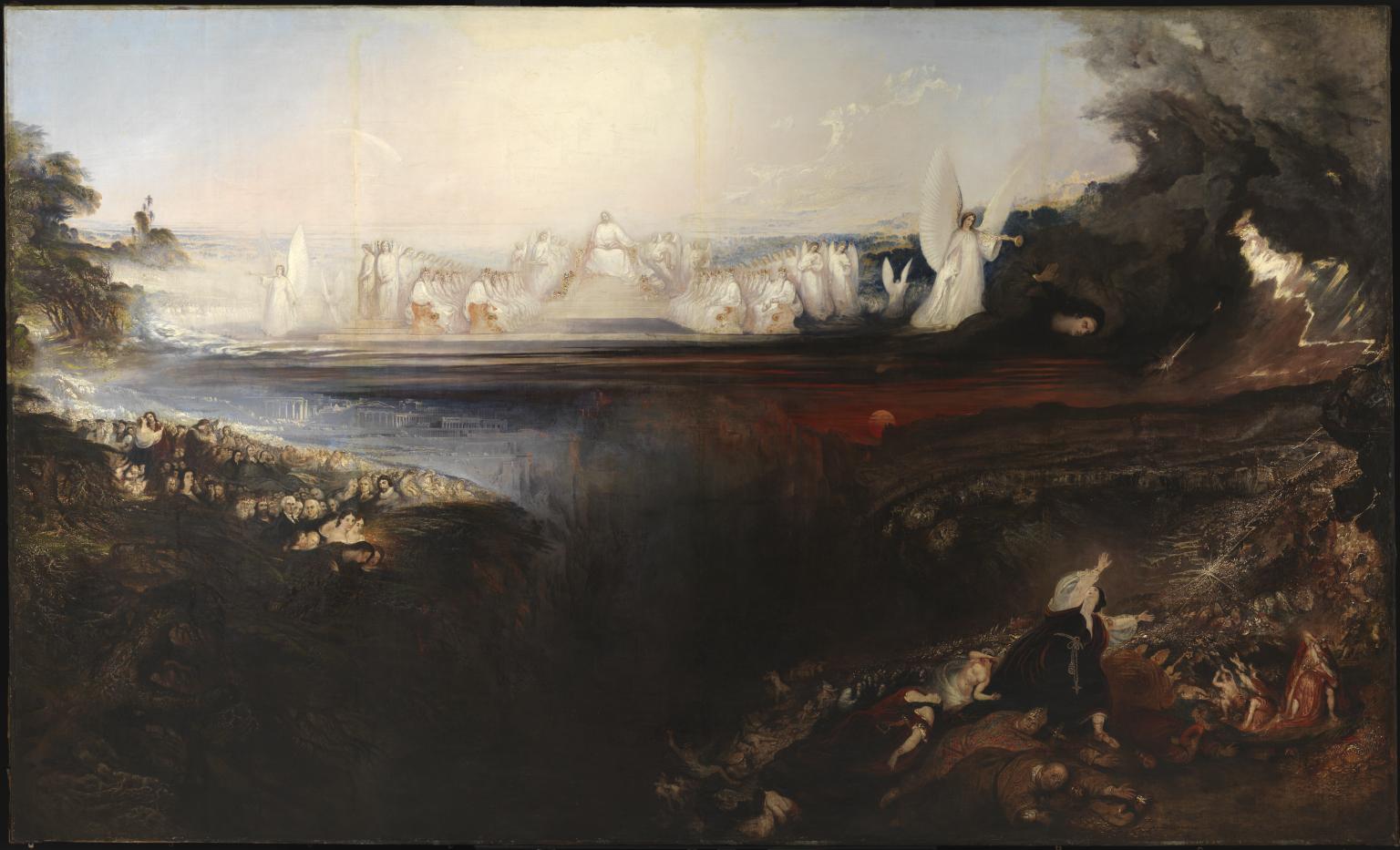
5. Wassily Kandinsky, The Last Judgment (1912)
One of the pioneers of abstract modern art, Russian artist Wassily Kandinsky believed that the savvy combination of color and form in abstract compositions allowed for some of the most transcendent expressions an artist could seek. In order to turn The Last Judgment into its abstract alter ego, Kandinsky opted for colors and forms that could be faithful to the strong emotions evoked in John’s account. We find an irregular black shape at the center surrounded by colored lines and dots and by open-ended and closed shapes of various sizes that seem to attract and repulse each other in a circular motion. The painting dates to 1912 and was part of a series of paintings featuring biblical themes including the Resurrection, Jonah and the whale, and the Great Flood.

